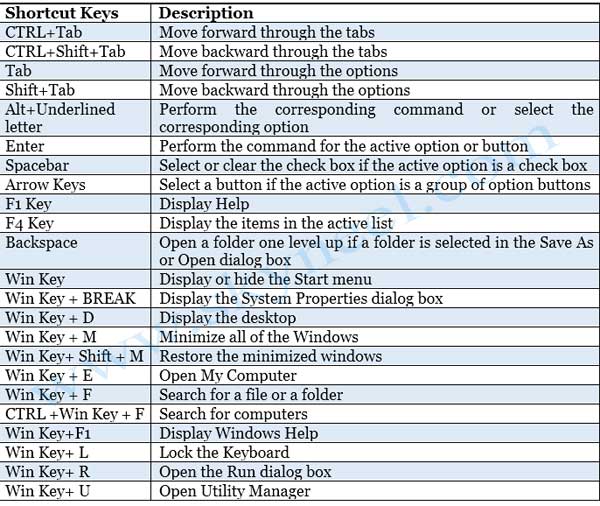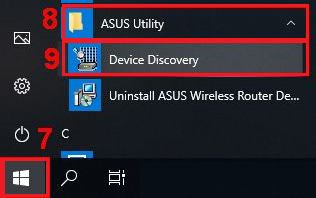

- #COMPUTER BUTTON SHORTCUTS MANUAL#
- #COMPUTER BUTTON SHORTCUTS PLUS#
- #COMPUTER BUTTON SHORTCUTS WINDOWS#
Restart the program and you're on your way again. When this happens, press the CMD+OPT+ESC keys, select the offending program and force quit. If you are using a Mac, it's not uncommon for programs to freeze and you get to see the spinning beach ball of death. Plus, you can see what is slowing down your system. Task Manager is useful for killing programs that are acting up or unresponsive.

#COMPUTER BUTTON SHORTCUTS WINDOWS#
In modern computers, CTRL+ALT+DEL either brings up Windows Task Manager, or a list of options including Task Manager. Ironically, he never intended for the public to actually use it. He wanted a quick way to reboot test systems that were locked. You could solve a lot of problems with these three keys.īonus history: CTRL+ALT+DEL was first added to computers in the '80s by David Bradley, an engineer at IBM. In the olden days of computers, it rebooted your computer if it was acting up, which happened quite a bit. Years ago, this was the first keyboard shortcut most people learned. To reset the zoom level to 100 percent, hit CTRL+0 (that's a zero).īonus tip: If you already have one hand on your mouse, you can also hold CTRL and scroll the mouse wheel to zoom in and out.ĬTRL+ALT+DEL (also known as "the 3-finger salute") or CMD+OPT+ESC (OS X) To zoom out again, just hit CTRL+- (that's a minus sign). This will increase the zoom level in most browsers and some programs.
#COMPUTER BUTTON SHORTCUTS PLUS#
Instead of moving closer to the screen and squinting, hit CTRL++ (that's a plus sign) a few times. Thanks to larger, high-resolution monitors for laptops and desktops, many websites and programs are hard to read. You're done!īonus tip: In cases where you want to move something instead of copy it, use CTRL+X (Cut) instead of CTRL+C. Just use the mouse to select what you want to copy, hit CTRL+C, click the mouse where you want to paste, and hit CTRL+V. For those who do a lot of copying and pasting, however, the keyboard shortcuts are a big time-saver. It makes moving text, photos, files, folders and everything else a breeze.Įvery program has Copy and Paste icons, and if you right-click on files and folders in Windows, you'll see Copy and Paste as options. If you go too far back, hit CTRL+Y to Redo.Īnother joy of using a computer is copying and pasting. Hitting CTRL+Z several times will often undo the last several changes. Using the CTRL+Z shortcut, you can undo a mistake very quickly. Many computer users don't even realize the Undo feature exists. I use it all the time when editing photos. With a computer, the Undo button gives you the freedom to experiment and make mistakes, and then change things back if you don't like it. With a typewriter, handwriting or traditional photo manipulation, undoing a mistake is a major process. One of the best things about using a computer for content creation is the Undo feature. When writing, I generally press CTRL+S after every few paragraphs I type or whenever I pause for a new thought. You don't have to take your hands off the keyboard and move the mouse cursor up to the Save icon. It works in nearly every program in existence and takes only a fraction of a second to type. That's why the CTRL+S shortcut is so handy. It comes in handy when you use programs that don't have auto-save.
#COMPUTER BUTTON SHORTCUTS MANUAL#
That's fine as a last resort, but I still prefer to make a habit of manual saving. The first thing I stress to anyone learning to use a computer is SAVE YOUR WORK OFTEN! You never know when the program you're using, or your entire computer, is going to crash.įor the last decade, many programs have included auto-save features that save your work every 5 to 10 minutes. Get in the habit of using them, and your mouse will soon start collecting dust! The six shortcuts below are the most essential to know, however. (Most of the shortcuts are the same on a Mac, except you use the CMD key instead of the CTRL key.)

When you want to print something, press Ctrl+P. Press Ctrl+F to find a word in a document or web page.

There are dozens of them, from pressing Ctrl+A to select everything in a window to pressing Ctrl+B to make selected text bold. A single, quick shortcut can accomplish the same thing as moving your mouse across the screen and clicking through several menus or hunting down buttons. To perform a keyboard shortcut, you press two, three or sometimes four keyboard keys at once. But telling them what to do is often a slow process. The great thing about computers is that they can work much faster than you can.


 0 kommentar(er)
0 kommentar(er)
